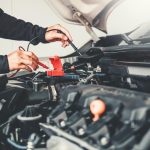Driving on highways can be fast and efficient, but it also comes with risks. Accidents, especially near work zones, exit ramps, or fixed obstacles, can be severe. One technology that has made a significant difference in reducing the impact of crashes is crash cushion attenuators. These safety devices are designed to protect drivers, passengers, and road workers by absorbing the energy of a collision and reducing damage.
Understanding Crash Cushion Attenuators
Crash cushion attenuators, often called impact attenuators, are safety devices installed on highways at high-risk locations. Their primary purpose is to absorb the force of a vehicle crash, preventing serious injuries and minimizing damage to both the vehicle and the structure it hits. They are commonly placed near concrete barriers, bridge supports, toll booths, and other fixed objects that pose a danger to drivers. By slowing down and cushioning the impact, crash cushion attenuators make highway driving significantly safer for everyone on the road.
How They Work
The effectiveness of crash cushion attenuators comes from their design. These devices are engineered to deform in a controlled way when struck by a vehicle. This deformation absorbs kinetic energy, which is the energy a moving vehicle carries. By spreading out the force over time and distance, crash cushion attenuators reduce the sudden impact that can cause severe injuries or fatalities. Some types use sand, water, or metal cartridges, while others rely on specially designed honeycomb structures to absorb energy efficiently.
Locations Where They Are Most Useful
Crash cushion attenuators are most commonly installed in areas where accidents are more likely to occur or where the consequences of a collision are high. Work zones on highways often have barriers that can be dangerous if a driver loses control. Exit ramps and merges can create sudden stops or slowdowns, increasing the risk of rear-end collisions. Fixed structures like bridge abutments, toll plazas, and signage supports are rigid obstacles that pose significant danger during crashes. Strategically placing crash cushion attenuators in these areas protects both drivers and workers.
Benefits for Drivers and Passengers
The primary benefit of crash cushion attenuators is enhanced safety. By absorbing crash energy, they significantly reduce the likelihood of serious injury. Drivers can maintain confidence while navigating highways, knowing that protective devices are in place at critical points. Additionally, crash cushion attenuators can lower the risk of secondary accidents. For instance, a vehicle that hits a cushioned barrier is less likely to rebound into traffic, which can prevent multiple-vehicle collisions. Overall, they provide peace of mind and save lives.
Maintenance and Durability
Crash cushion attenuators are designed to be durable and reliable, but they require regular maintenance to remain effective. After a collision, the device often needs inspection and repair or replacement of certain components. Highway departments monitor these devices closely to ensure they function correctly when needed. Proper maintenance ensures that crash cushion attenuators continue to protect drivers effectively over time and that highways remain safe.
Contribution to Highway Safety Culture
Beyond physical protection, crash cushion attenuators also contribute to a broader highway safety culture. Their presence signals to drivers that authorities are actively investing in safety, which encourages more cautious driving. By highlighting high-risk areas and offering visible protection, these devices remind drivers to slow down and pay attention, especially in work zones or areas with heavy traffic. In this way, crash cushion attenuators serve both as physical safety devices and psychological reminders for safer driving behavior.
Conclusion
Crash cushion attenuators play a vital role in making highway driving safer. By absorbing the energy from collisions, they reduce injuries, prevent secondary accidents, and protect both drivers and infrastructure. Strategic placement in high-risk areas, combined with regular maintenance, ensures these devices remain effective over time. More than just protective barriers, crash cushion attenuators are a key part of promoting a culture of safety on highways, allowing everyone to travel with greater confidence and security.












